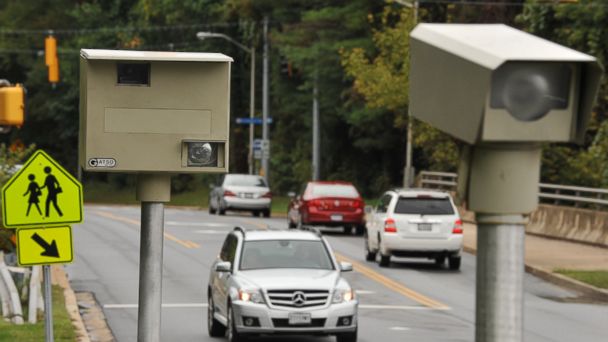Red-Light Cameras Save Lives but May Increase Rear-End Collisions, Experts Say
More than 700 people die in the United States every year as a result of motorists failing to stop when the light turns red.
In response, more than 500 communities in 25 states have turned to red-light cameras to deter the offenders. Just the presence of a camera has been found to reduce red-light running by up to 40 or 50 percent.
But they are not without controversy.
Opponents say while they decrease deadly so-called "T-bone collisions," drivers are more likely to slam on the brakes when they see a camera to avoid paying a fine. This increases less serious, but still dangerous, rear-end collisions.
"I would take the rear end crash any day over a T-bone crash," Adrian Lund, president of the Insurance Institute for Highway Safety, said.

(Jahi Chikwendiu/The Washington Post/Getty Images)
"If you do extend the amber light, you do get a reduction in crashes," Lund said. "However to get the full benefit to make people to really pay attention you need the red-light camera as well."
But the best way to stay safe, experts say, is to slow down and be prepared to stop.